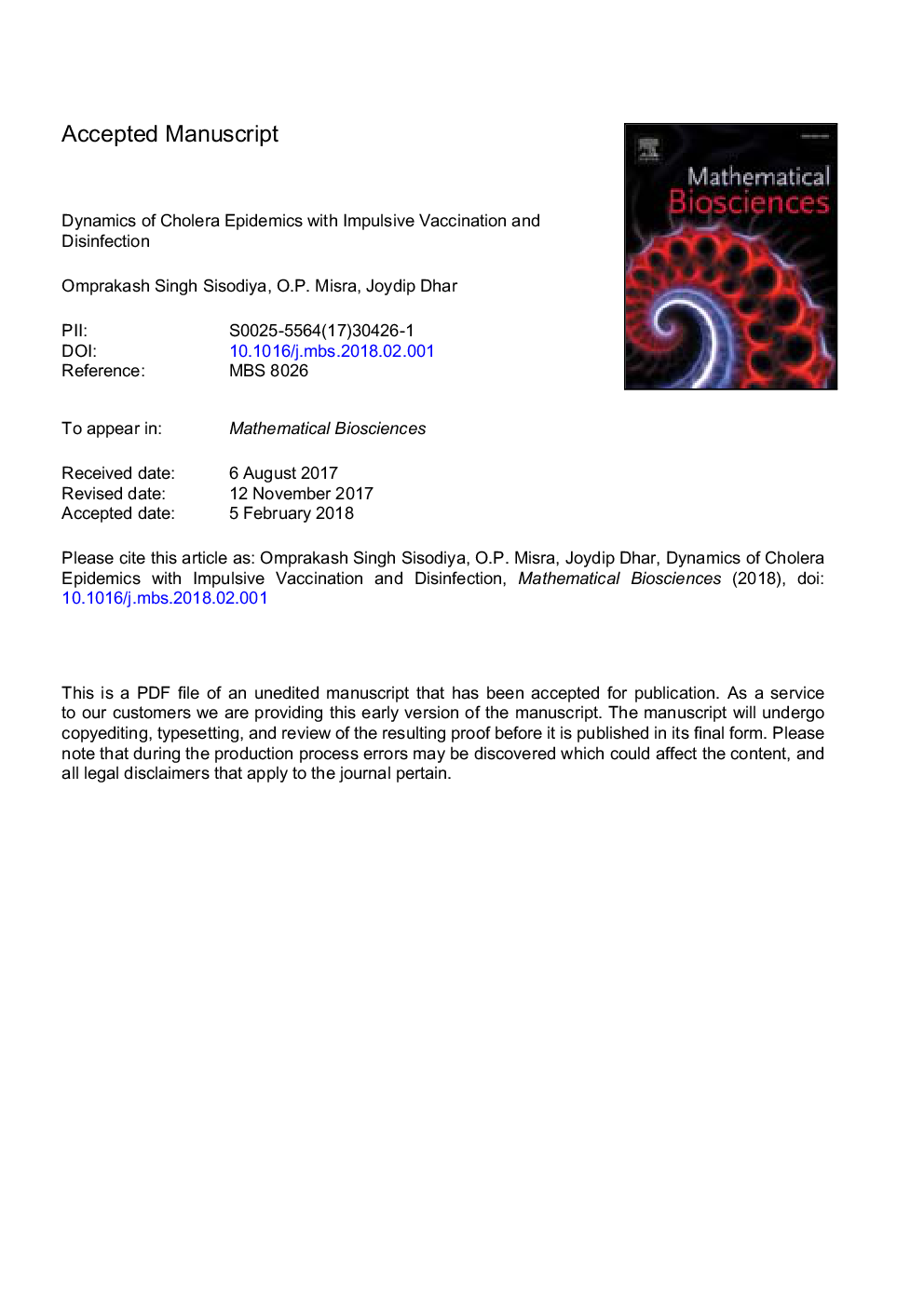ترجمه فارسی عنوان مقاله
دینامیک همه گیر گوشتخواران با واکسیناسیون و ضد عفونی تکان دهنده
عنوان انگلیسی
Dynamics of cholera epidemics with impulsive vaccination and disinfection
| کد مقاله | سال انتشار | تعداد صفحات مقاله انگلیسی |
|---|---|---|
| 122222 | 2018 | 32 صفحه PDF |
منبع

Publisher : Elsevier - Science Direct (الزویر - ساینس دایرکت)
Journal : Mathematical Biosciences, Volume 298, April 2018, Pages 46-57
ترجمه کلمات کلیدی
بیماری منتقل شده از آب، وبا، واکسیناسیون پالس پاتوژنها، تلقیح تکان دهنده آب اثر تصفیه،
کلمات کلیدی انگلیسی
Water-borne disease; Cholera; Pulse vaccination; Pathogens; Impulsive inoculation of water; Sanitation effect;

